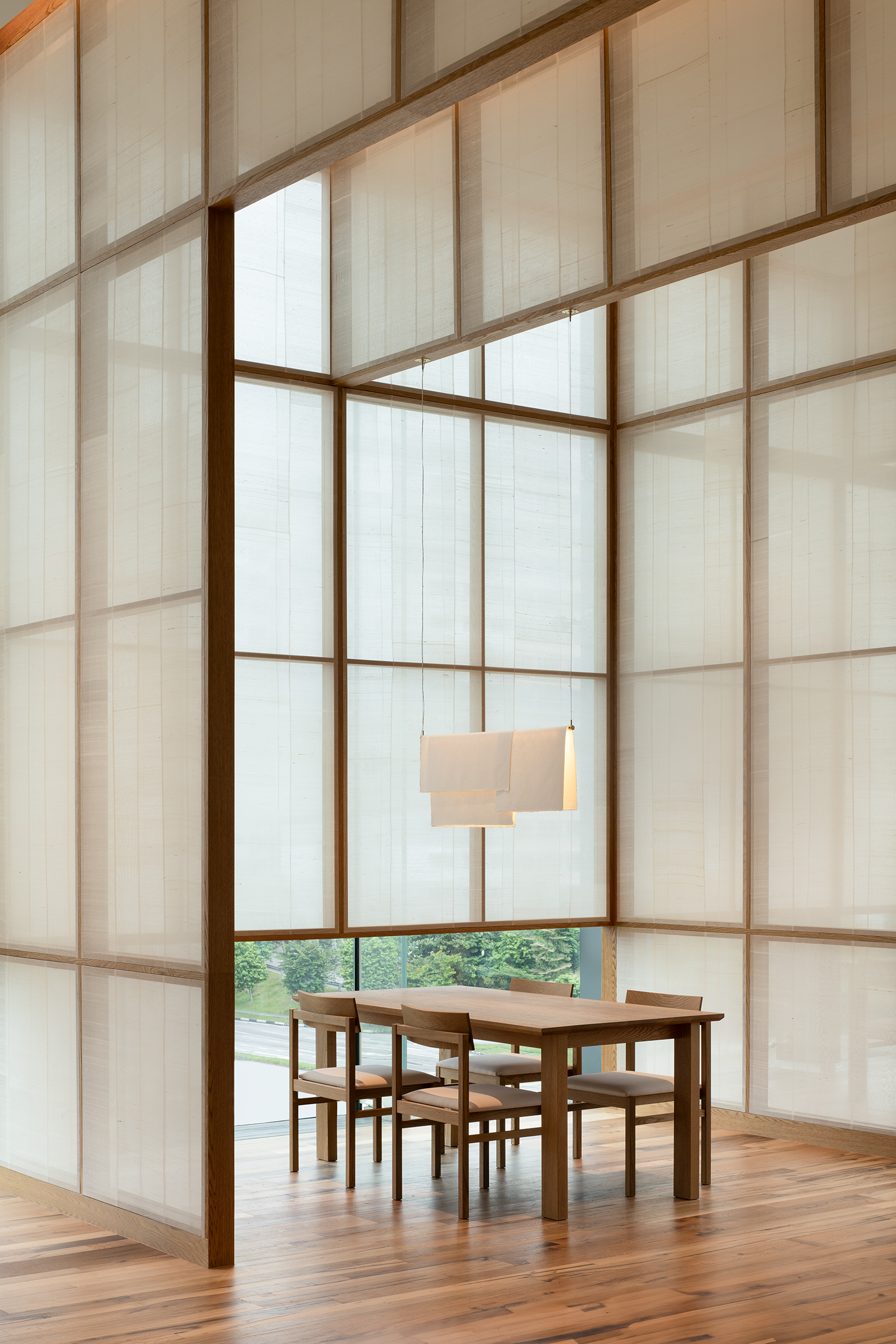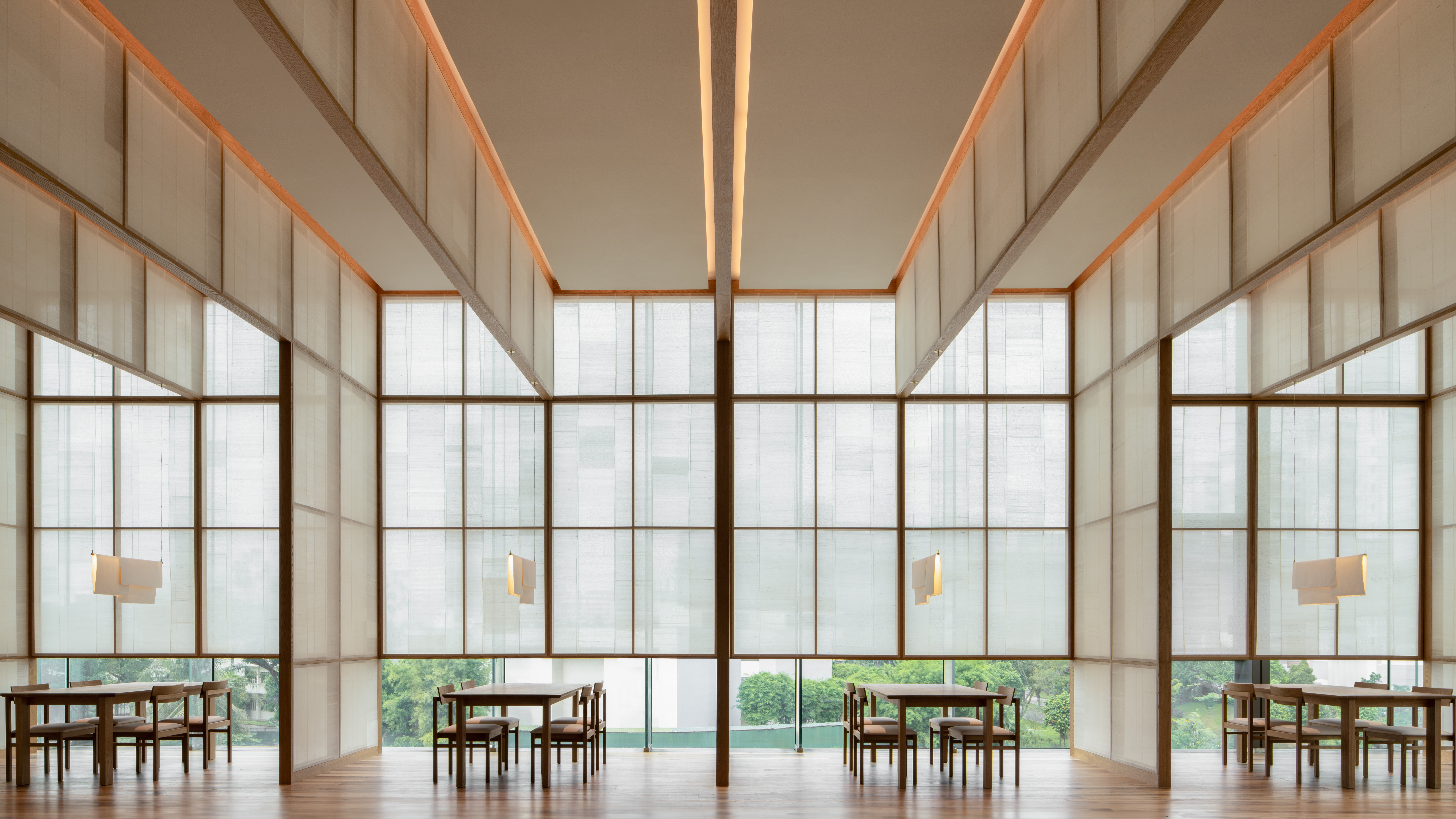
In partnership with Hyundai
The last place anyone would have ever expected Corey Lee to open a casual Korean restaurant is an industrial district, much less at Hyundai’s slick new innovation centre in Singapore. Yet, to hear the three-Michelin-starred chef tell it, his freshman collaboration with the automobile powerhouse was a timely opportunity to explore memory, culture, emotion and even time through the lens of a thoughtfully conceived menu based on classic Korean dishes.
When Lee – the Seoul-born former head chef at The French Laundry, as well as the driving force behind celebrated San Francisco restaurants Benu and San Ho Won – first met with Hyundai, it was for a tentative exploration of how he might enhance its new ‘smart urban mobility hub’, which is committed to sustainable human-centric innovation and a highly automated flexible production system. A concern for sharing the beauty of Korean culture – through authentic local cuisine with an innovative contemporary touch – formed the basis for the hub’s new restaurant Na Oh, which translates to a koan-like ‘moving from inside out’.
Corey Lee on Na Oh and melding modernity with tradition
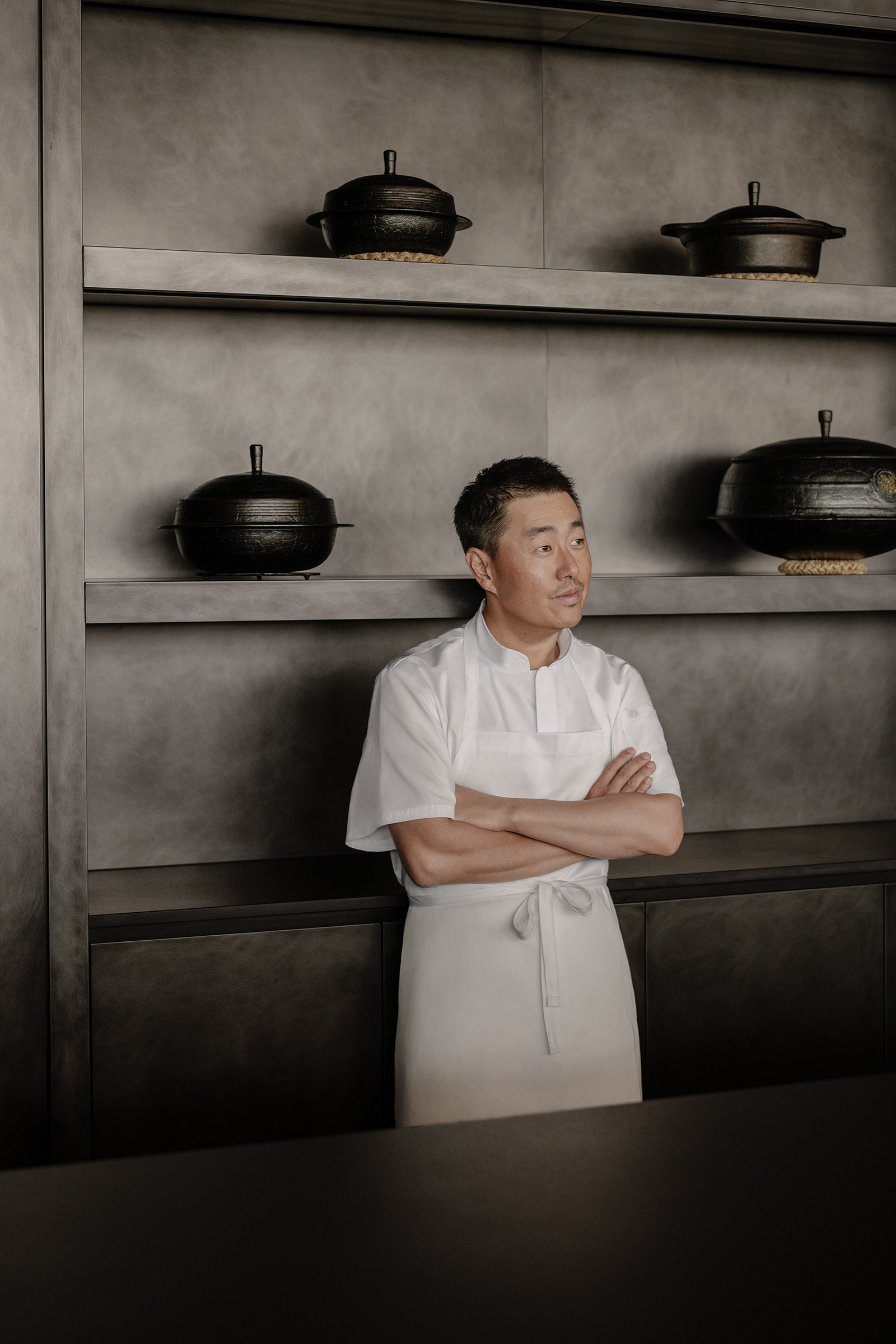
The timing of the conversation, Lee says, was fortuitous. ‘Na Oh and its location have aligned perfectly with where I am in my career right now. I opened Benu in 2010, when I was 33. I don’t have so much to prove these days. I’m now freer to explore the more creative side of running a restaurant. I get to enjoy the process and perhaps even add to Singapore’s dynamic dining scene.’
Hyundai was keen to provide a healing experience in a quiet space away from Singapore’s city centre, as well as allow for an innovative brand narrative. The resulting 40-seater restaurant, tucked away in a light-filled corner on the building’s third floor, is a tranquil haven of dark stone, warm-hued timber, geometric ceiling screens and delicate rod lamps, artfully draped with thick sheets of handmade hanji paper that throw diffused light over the dining tables.
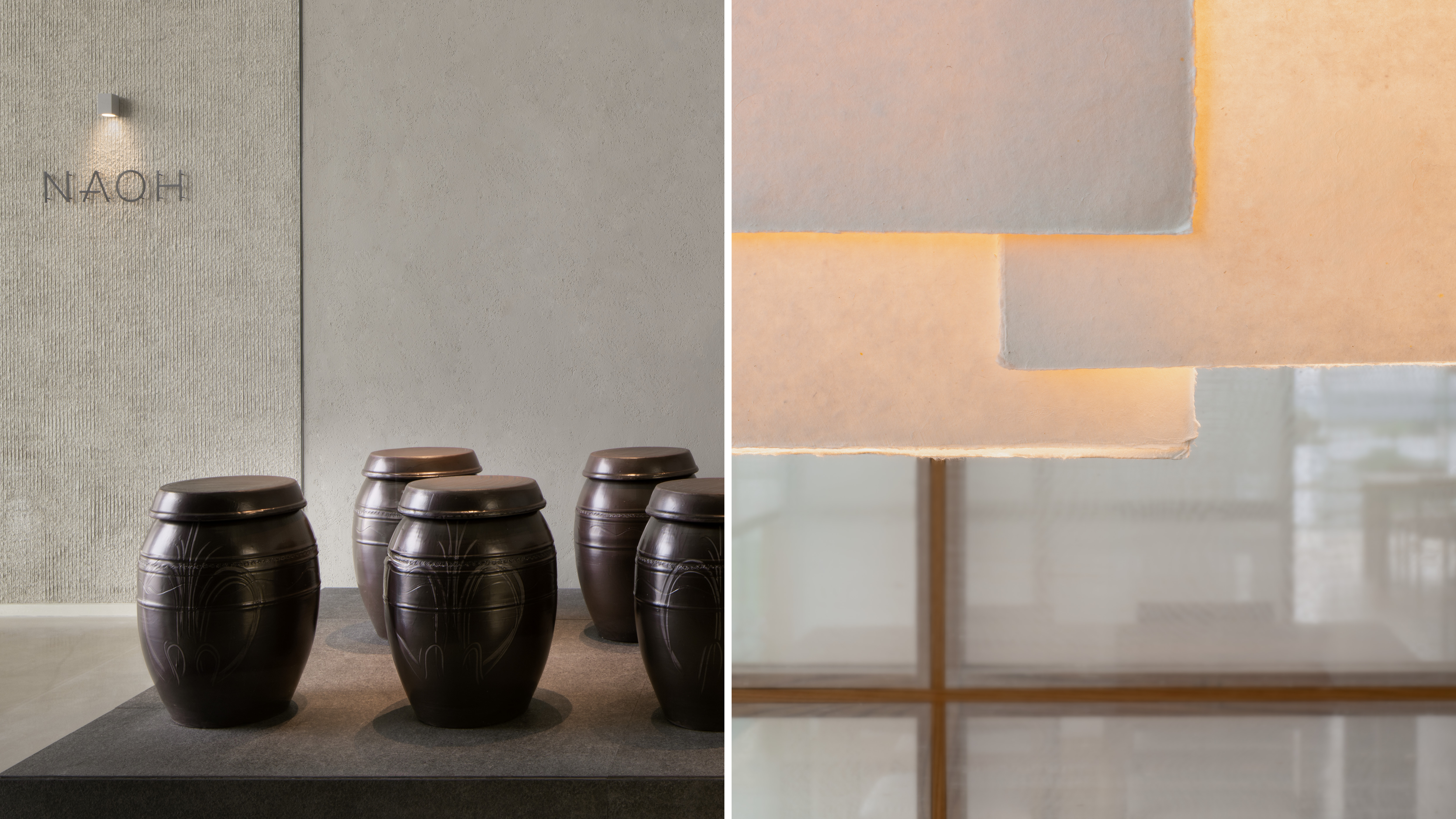
In dressing the space, Lee and Hyundai worked with a gold-plated team of Korean creatives and artisans, who refashioned classical Korean elements with a deft modern touch. Traditional ceremonial vessels have been reshaped and handcrafted by tableware specialist H’soban into striking dessert bowls, window shades are of natural oksa silk woven by fifth generation weavers Hu’s Silk, while the normally voluminous silhouette of the hanbok (traditional Korean attire) has been slimmed down by K-pop-favourite Leesle to create smartly tailored, minimalist uniforms for kitchen and serving staff.
This almost maniacal attention to detail – embracing the beauty of craft, as Lee puts it – creates a contemporary version of a Korean interior that savvily avoids worn-out decorative tropes while retaining a vibe that, especially if you’re a dyed-in-the- wool traditionalist, is both familiar and comforting.
It’s a tricky balancing act but it is one that is skilfully played out in Lee’s deliberately unfussy, seasonal menu – though he is careful to stress that casual does not equate to cheap. ‘The style at Na Oh is to be considerate and to guide guests through the menu a bit more than one would in a truly casual restaurant,’ he says. ‘In that sense, an element of fine dining does come through. At the same time, I want to make sure that the food here isn’t dumbed down either. Yes, it’s modern, but it’s also connected with Korean traditions that have evolved in a warm and relatable way.’

He points to the samgyetang (ginseng chicken soup), which appears on the current summer menu as an example of this evolution. Composed of a young chicken stuffed with rice, mushrooms, green scallion sauce and kimchi, it is one of the most recognisable dishes in the Korean culinary repertoire and yet, as Lee points out, it’s also a dish that, even in upmarket restaurants, tends to be pre-made, pre-stuffed and pre-cooked. In contrast, at Na Oh, the kitchen prepares the fowl in a cast iron pot heated to 200°C and 50 per cent humidity, which allows the meat to be slow-cooked on site.
Cold noodles are prepared Pyongyang-style, with thin strips of beef that have been cured for two days, served with marinated quails’ eggs, and doused with a pure, clean broth. Even the jang, or traditional sauces that range from soy and doenjang to gochujang, are naturally fermented and aged in giant glazed onggi pots handcrafted by 87-year-old pottery master, Chun-ung Bang.

Vegetables, meanwhile, come from two on-site hydroponic smart farms, unapologetically futuristic with their double-height conservatories and white robotic harvesters that, each day, collect around 30kg of seasonal leaves, including ice plant, sorrel, romaine lettuce, red coral lettuce, crystal green lettuce, Swiss chard, mustard, kale and mizuna.
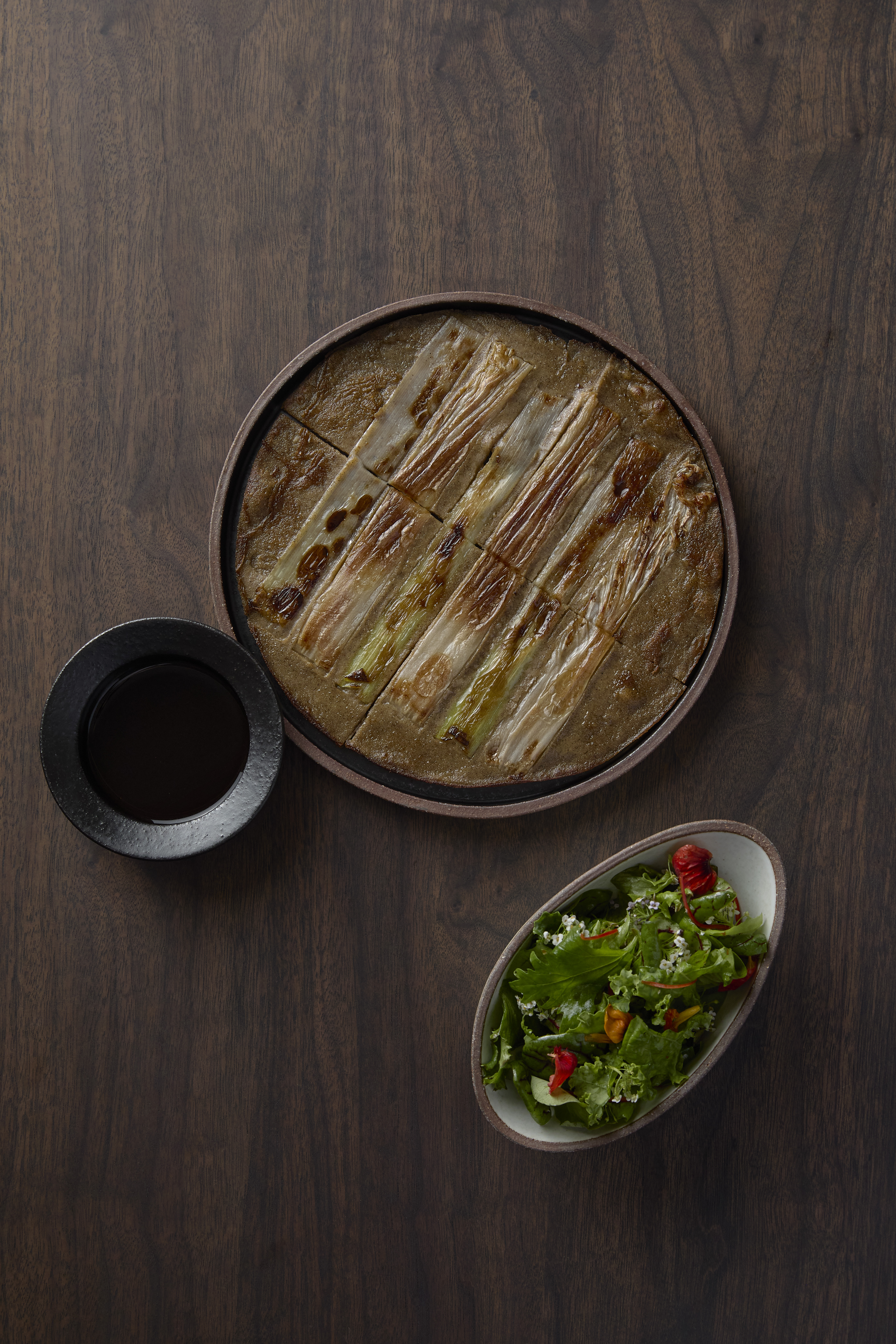
Lee will be the first to tell you that any discussion about Korean food is a polarising one. It doesn’t help that the Korean restaurants typically covered by the press tend to be newly opened establishments that do not represent the full Korean repertoire. Na Oh presented him with the opportunity to craft a truly Korean menu and to create an unintimidating experience that is approachable for the neophyte, while resonating with connoisseurs in a meaningful way.
‘We can’t be all things to everyone,’ he admits. ‘But we have to be confident and remember why we’re doing this – which is to create not just the best dining experience we can, but also one that guests will want to repeat. But how do you create one that bridges age and values, when the goal is to have someone dine with us and say at the end of the meal, “I want to come back here with my parents”?’
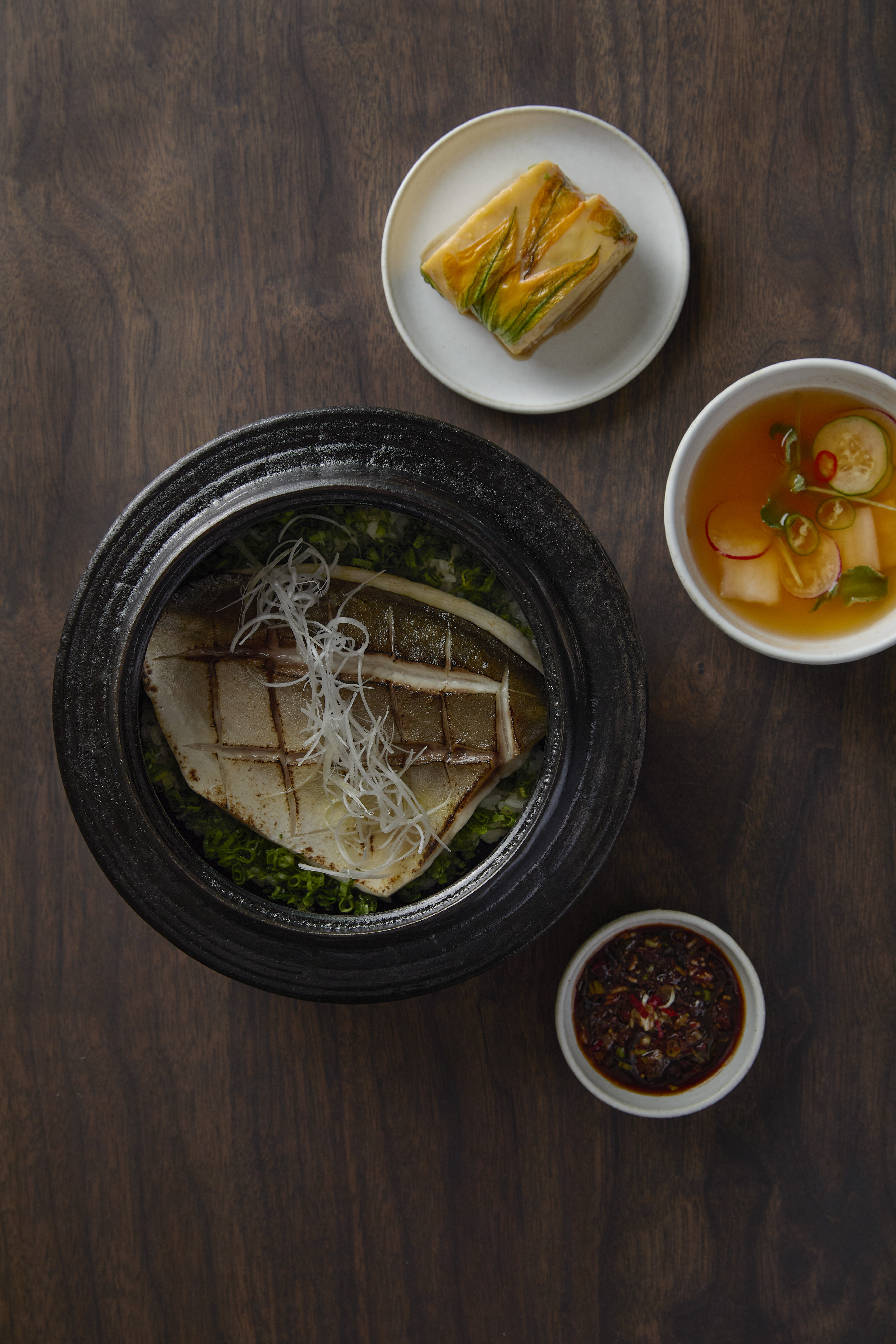
If it’s not already clear, for Lee, this partnership with Hyundai – the largest and most ambitious project that he’s ever done – is both an opportunity for exploration and a daring experiment. ‘The thing is, we don’t have a common vocabulary to describe even taste.’
That he has chosen to start his exploration halfway around the world from his hometown serves only to emphasise the seriousness of his intent. ‘When you open a restaurant overseas, the goal is different. It’s no longer just a business opportunity. It’s personal.’
hyundai.com/sg/naoh, @naohrestaurant
